Seventeen-year-old Nehemy Antoine and his father, Emile, thought it would be easy to enroll the teen in a US high school. They were US citizens, after all.
The pair, immigrants from Haiti, brought the teenager’s passport, his social security card, and a report card to Golden Gate High School one afternoon in March 2016. Nehemy, who loves math and music, had already finished algebra I and geometry in Haiti; someday soon, he hoped to study computer science in college.
The administrator at the front desk handed Nehemy a leaflet that neither he nor his father, who grew up speaking Haitian Creole, understood, according to the family. Golden Gate didn’t provide an interpreter, so they left after just a few minutes, feeling confused.
It wasn’t until the next day, when a friend translated the document, that Nehemy, now 19, realized the school had essentially told him to go away. The handout declared him “no longer eligible to pursue a traditional high school diploma in Collier County” because of his age and referred him to online programs, workforce training sessions, and GED prep classes — everything, it seemed, except what he was actually looking for: a mainstream high school education.
“My real job is to go to school,” says Nehemy, who works late into the night bagging groceries at a local supermarket chain. “There’s nothing more important.”
Nehemy is one of an estimated 200 young immigrants who have been told they can’t attend high school in Florida’s Collier County, according to a lawsuit filed by the Southern Poverty Law Center that is headed to trial next year. Typically, state laws obligate schools to offer a free education to students through at least age 19. Yet a growing wave of complaints allege that school districts around the country have excluded thousands of teenage immigrant students, often by claiming that they can’t meet the students’ language needs or that students won’t graduate on time — a judgment call that Florida law allows districts to make.
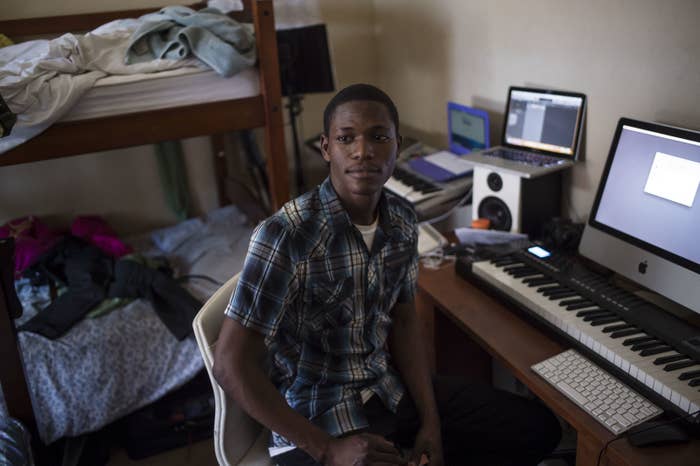
So far, the Collier case, with its class-action status pending, is one of four lawsuits brought by civil rights groups over the issue — in the other three cases (two of them class actions), the Lancaster, Pennsylvania; Utica, New York; and Palm Beach County, Florida, school districts eventually agreed to enroll the immigrant teens as part of settlements.
But the scale of the problem is far larger than four suits. The Teacher Project, an education reporting fellowship at Columbia Journalism School, has identified 18 communities where civil rights groups have complained to school districts or to state or federal officials. Those include a 2017 letter from the American Civil Liberties Union of Pennsylvania telling the Harrisburg School District to stop delaying the enrollment of refugee students as young as 5, and a 2018 demand from the Southern Poverty Law Center instructing Miami-Dade County Public Schools to stop rejecting teens from Central America.
Moreover, an Associated Press analysis from 2016 focused exclusively on unaccompanied minors from Central America found that at least 35 school districts in 14 states have discouraged immigrant students from attending traditional public schools — if not outright rejecting them.
Districts have been accused of denying enrollment to undocumented and documented students alike. Immigration lawyers say they started seeing a sharp increase in this practice five years ago, when tens of thousands of unaccompanied minors fled violence in Central American countries. Many school districts lacked sufficient language and other supports for the newcomers and feared the teens, who often speak little English, would depress their test scores and graduation rates.
The school districts have relied on what some see as a legal loophole: The federal government delineates no minimum age through which public schools must serve students, except for those with disabilities. Typically, states require schools to provide a free education through the age of 19, 20, or 21, according to the Education Commission of the States. But four states leave room for districts to craft their own policies — including Florida. (Federal law does mandate that schools cannot deny enrollment based on immigration status.)
Collier County Public Schools Superintendent Kamela Patton did not respond to requests for comment, saying through an attorney that the district doesn’t comment on pending litigation. In public court records, the district disputes the family’s claim that an administrator turned Nehemy away from Golden Gate in spring 2016. But they also defend their decision to divert him from high school to adult ed, claiming that he wasn’t academically prepared for ninth grade.
In the court documents, district officials add that state law gives them the flexibility to set their own age limits on enrollment. They also argue that the practice of redirecting older, undercredited students to adult education programs applies to all students, regardless of immigration status. “We don’t feel like it’s a good thing to be putting 22- and 23-year-olds in the same school as 14-year-olds,” says Roy Terry, the school board chair.
“This has delayed my life, my career, and my future.”
In Nehemy’s case, the family never imagined that it might be too late for him to get a traditional high school education in the United States. They rushed to move him from Haiti to Florida before his 18th birthday, knowing he could more easily become a citizen as a minor.
After the father and son left Golden Gate that afternoon two years ago, Emile thought an administrator would reach out over the phone, but the call never came. He tried to press Nehemy’s case with three phone calls and two more in-person visits. Eventually, he gave up and enrolled his son in one of the programs highlighted in the pamphlet: a district-run adult English-language program housed at Lorenzo Walker Technical College.
Still, Nehemy desperately wants to attend a regular high school. “This has delayed my life, my career, and my future,” he said in written testimony last summer. “I just need access to a real school.”
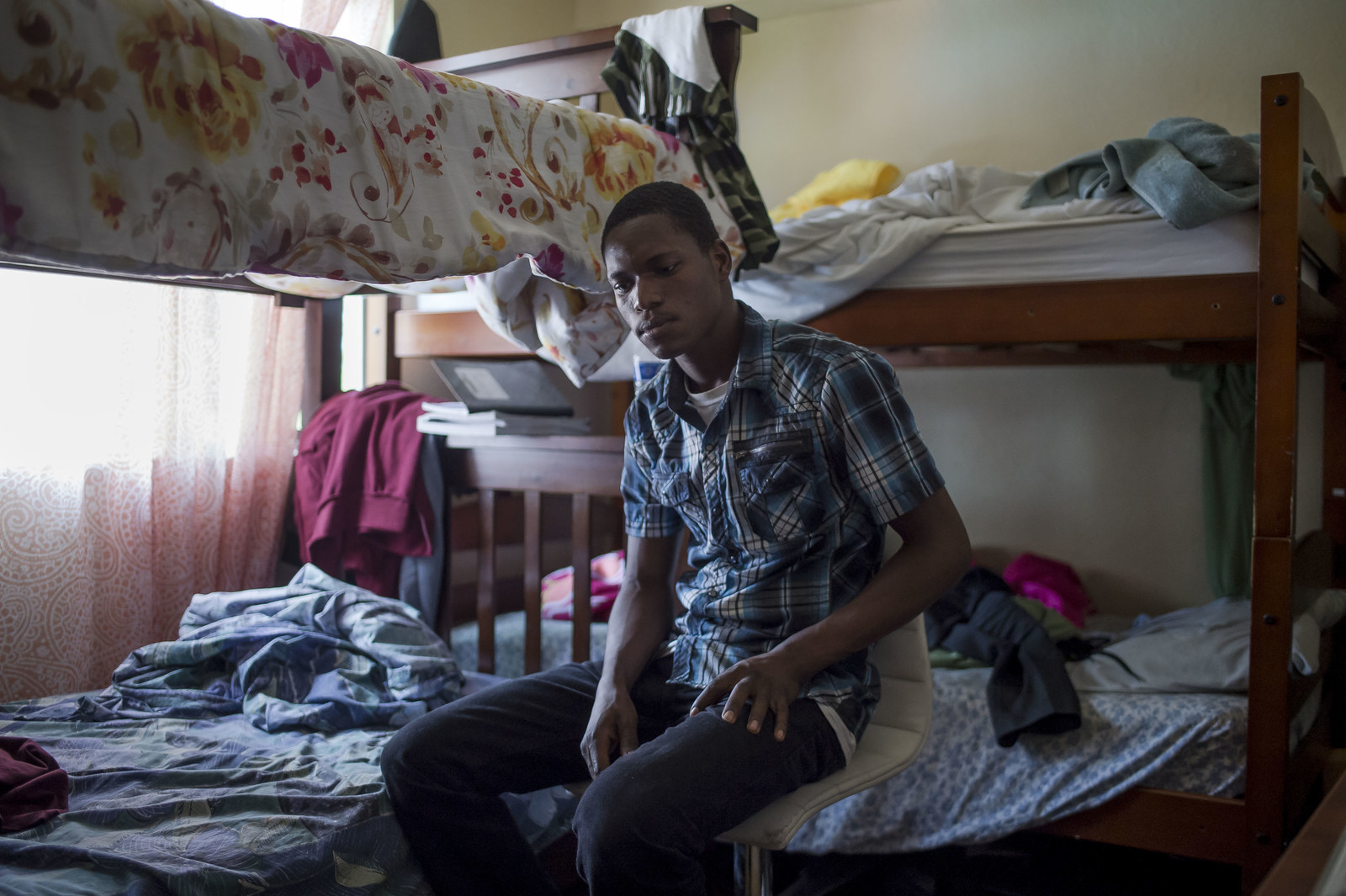
When Nehemy disembarked from his flight to Fort Lauderdale from Port-au-Prince in February 2016, the US felt at once familiar and different. The roads and beaches in Naples reminded him of Haiti, but here, the streets were marked with stop signs and dotted lines, the shoreline covered in hotels, and swimmers slathered in sunscreen. The air was colder in Naples too: Back home, five minutes in the sun singed your skin.
Nehemy shivered. He missed his school, his sister and five brothers — who wouldn’t be able to join him here for a few long months — and his home, a small farm bursting with potatoes and papaya, carrots and chickens, in the heart of the Port-de-Paix township on the country’s northwest coast.
Naples felt peaceful to Nehemy, free of the gunshots back in Port-de-Paix. After a death, Nehemy, an avid saxophone player and flutist, would play in a procession with other musicians, marching through the streets. “When somebody dies, everyone’s crying,” he says. “Your mind is not where it should be.”
The family had methodically worked over the years to get US citizenship or legal residency for everyone, eager to access what they hoped would be superior work and education prospects. Emile, a US citizen through his mother, had lived and worked in Florida for years, sending money home to his wife and children. When the parents decided to move everyone to Naples a few years ago, they started with Nehemy, the middle child of seven, since he could become a US citizen through his father if he arrived before the age of 18. Because of limited money for airfare and passports, everyone was moved at different times.
Five of the siblings slept on the floor in a crowded apartment for months after the entire family had arrived; eventually, a local pastor helped them find more beds. Everyone pitches in to make ends meet: Nehemy’s mother works nights at Walmart, and the four older siblings, including Nehemy, have jobs at the supermarket chain Publix, Home Depot, or Lowe’s. Emile worked as a cook and an electrician until a back injury during Haiti’s 2010 earthquake left him unable to stand straight. Nehemy’s younger siblings were young enough to enroll in public school; two brothers attend Golden Gate.
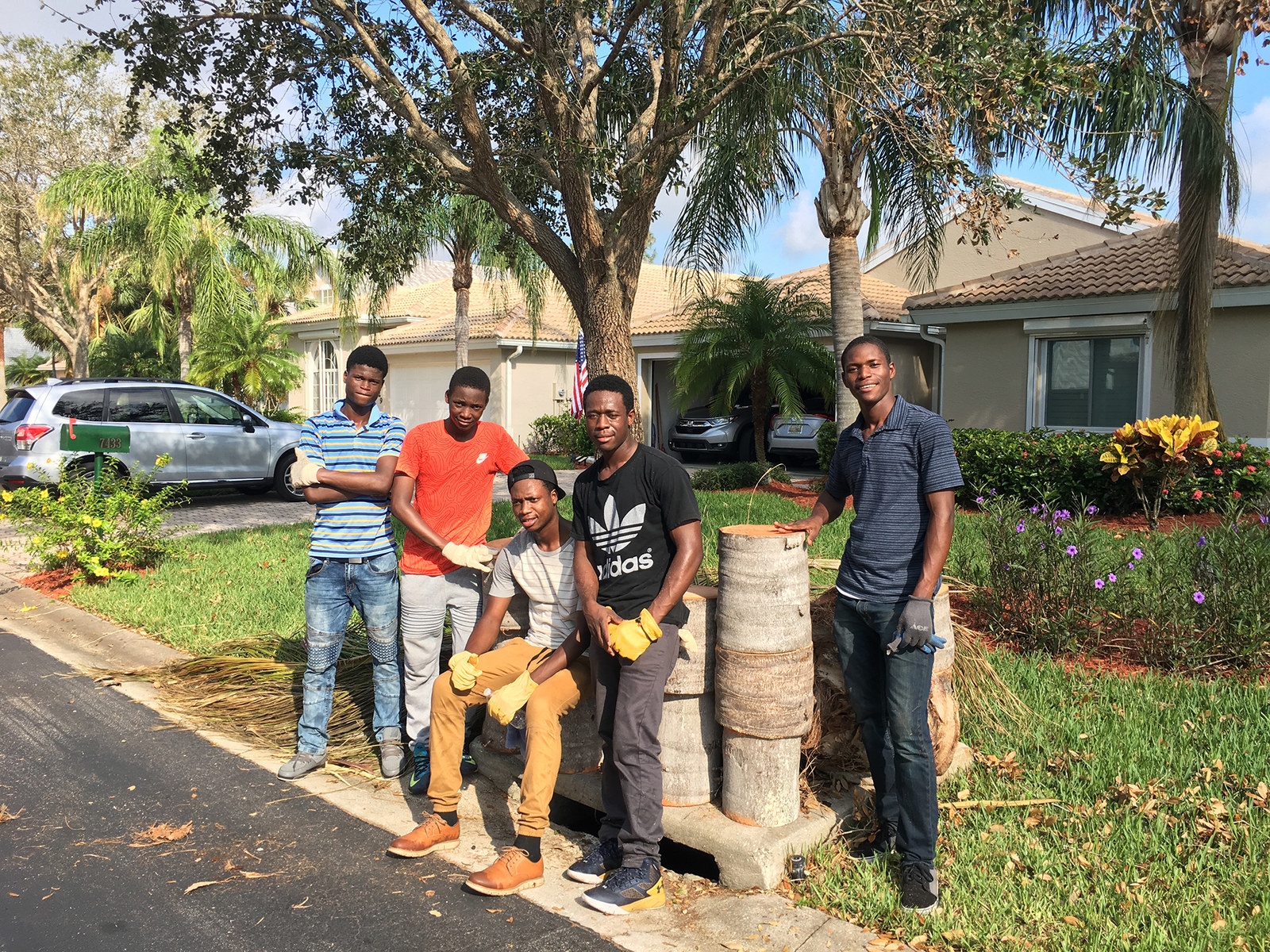
When Nehemy arrived in Florida, he knew very little English: “Nada,” he says. On a basic English test Nehemy took on his first day of English classes, he could only answer two questions: What’s your name? How old are you?
Yet he progressed quickly through the English-language program, partly because he studied so much on his own — looking up word after word on Google Translate and listening to YouTube clips to learn an American accent. After several months, he “graduated” out of the English program and began to work toward his GED, a set of tests that demonstrate a student has mastered most high school–level skills.
Nehemy learned about the lawsuit over a year ago, when an employee for the Southern Poverty Law Center handed him a card outside Lorenzo Walker, the technical college where he takes English and GED classes. He followed up within days.
“Even though I might not have the chance to go to high school, I’m going to keep fighting for other students younger than me.”
Since 2016, six other plaintiffs in the Collier lawsuit — all from Haiti or Guatemala — have dropped off as they grew older and gave up. Currently, the suit has one other plaintiff, a Guatemalan student represented through her aunt. (Nehemy is named because he’s no longer a minor.) The 200 figure in the class petition is a “conservative” estimate, according to the attorneys, based on the number of foreign-born students between the ages of 15 and 21 enrolled in adult English programs in Collier County whose last completed schooling was outside the US. Between 2013 and 2017, there were 1,614 such students in the county, the lawsuit states.
Nehemy is committed to the cause but says it’s been daunting to be the only student with his name attached to the suit. “If there were 200 people on the beach who were afraid to go into the water,” he says, “I would be afraid to go in, too.”
He’s comforted by the knowledge that he might help those who come after him. “Even though I might not have the chance to go to high school, I’m going to keep fighting for other students younger than me,” he says.

In court documents, Collier school officials lay out two main justifications for redirecting Nehemy and other students to adult learning programs. First, they argue that nothing in federal or state law requires districts to provide a free public education for students over 16, the upper limit for compulsory education in Florida. Denying students access to a mainstream high school has everything to do with age and nothing to do with national origin, they say. (Collier’s local policy bars students 17 and older from attending secondary school if they can’t “reasonably” earn enough credits to graduate before turning 19.)
Second, they maintain that the district’s adult learning programs can serve students like Nehemy better than a traditional high school because students can move at their own pace. Terry, the school board member, says the district’s adult English as a second language programs are well-designed to meet their needs. “We’re interested in serving all these students in Collier County and making sure they have the ability to earn a living wage when they come out,” he says. (Mary Ellen Cash, a retired Collier County teacher and one of Terry’s opponents in an upcoming school board election, said she would fight to change the current policy if elected. “Once the individuals are here, we have the fiduciary responsibility to educate them,” says Cash, who immigrated to New Jersey from Cuba at the age of four. “I don’t understand a policy that would limit that.”)
Julie Sugarman, a senior policy analyst at the Washington-based Migration Policy Institute, has some sympathy for the argument that not all students can best be served in a traditional high school, particularly older teens with few language skills. “Even with the best support, that can be overwhelming for them,” she says. “Maybe they're better served in adult ed, a place to learn job skills, a place to learn English.”
“Maybe they're better served in adult ed, a place to learn job skills, a place to learn English.”
The recent influx of non-English speakers has put scores of school districts in a bind, she adds. “All of the accountability pressures on principals have had a perverse consequence of making them uninterested in serving students likely not to do well on standardized tests and graduate within four years, because that's how schools and administrators are measured.”
The key, Sugarman says, is for school officials to be transparent, provide a range of choices, and work with students to figure out what program is best for them. "People should be told what their options are,” she says.
Immigrant advocates say that hasn’t been happening in Collier schools, and that the district’s enrollment policy was designed specifically to shut out older, immigrant teens. The lawsuit had its origins more than six years ago in the refusal of staff at the Palmetto Ridge High School to enroll a 17-year-old Cuban refugee named Armando Padron.
Michael Scanlan, then education adviser at the Naples branch of Catholic Charities, says he accompanied Padron’s parents to a meeting with a school administrator, who informed the group that Padron’s age, his limited English skills, and gaps in his education made him unlikely to graduate.
For months, Scanlan and his colleagues urged district officials, including superintendent Kamela Patton, to let Padron enroll. But in March 2013, the district upheld the school’s decision. Five months later, the school board codified the policy. In court documents, Scanlan says Padron ended up in a minimum-wage job and never finished high school.
Scanlan became the self-appointed “go-to guy” for helping affected immigrant teenagers. All in all, he estimates that he supported 30 families, many of whom were eventually able to enroll their kids in high school.
Nehemy’s lawyers point out that federal and state laws require districts to provide English-learner students equal access to an education. “If a district is educating students beyond the age of 16 who speak English, then they need to provide the same opportunity to English-learner students, or they’re potentially violating federal law,” says Michelle Lapointe, acting deputy legal director of the Immigrant Justice Project at the Southern Poverty Law Center, who is spearheading Nehemy’s case.
In Lancaster, refugee students alleged that the school district shunted them into a boot camp–style alternative school, where they were subjected to daily pat-downs.
In Lancaster, Utica, and Palm Beach, the sites of the other lawsuits, the allegations had a similar ring. In Utica, several refugee students said district officials denied them access to mainstream high schools — even when they had already been enrolled in another US school district — forcing them into subpar programs where they could work toward a GED but not a regular diploma. In Lancaster, refugee students alleged that the school district shunted them into a boot camp–style alternative school, where they were subjected to daily pat-downs and deprived of proper English instruction. Both cities, like Collier County, have seen their immigrant and refugee communities explode in recent decades. In recent years, Lancaster, for instance, accepted 20 times more refugees per capita than the rest of the country.
In other cases, civil rights groups have directly petitioned school districts or lodged written complaints with state and federal agencies that stop short of lawsuits. In New York, the attorney general entered into agreements with 22 districts suspected of barring immigrant students from equal education opportunities.
Immigration lawyers say dozens of complaints never get documented in writing. Often, a quick phone call from an advocate to a school district official resolves the issue, at least in the short term. “If someone’s hassling a parent, sometimes we just have to call and say, ‘Let this kid into school,’” says Mary Moran, cofounder of the immigrant advocacy organization Our Voice Nuestra Voz in New Orleans.
And then there’s the untold number of immigrant families who, unlike Nehemy and his father, never come forward — a reticence that immigrant groups say has grown since President Donald J. Trump took office and pushed for the departure or deportation of many immigrant communities, including thousands of Haitians.
“Parents are scared to organize,” says Moran. “For someone to say, ‘I care so much about my child’s education that I’ll be on the front lines advocating for this’ — it’s a huge risk.”
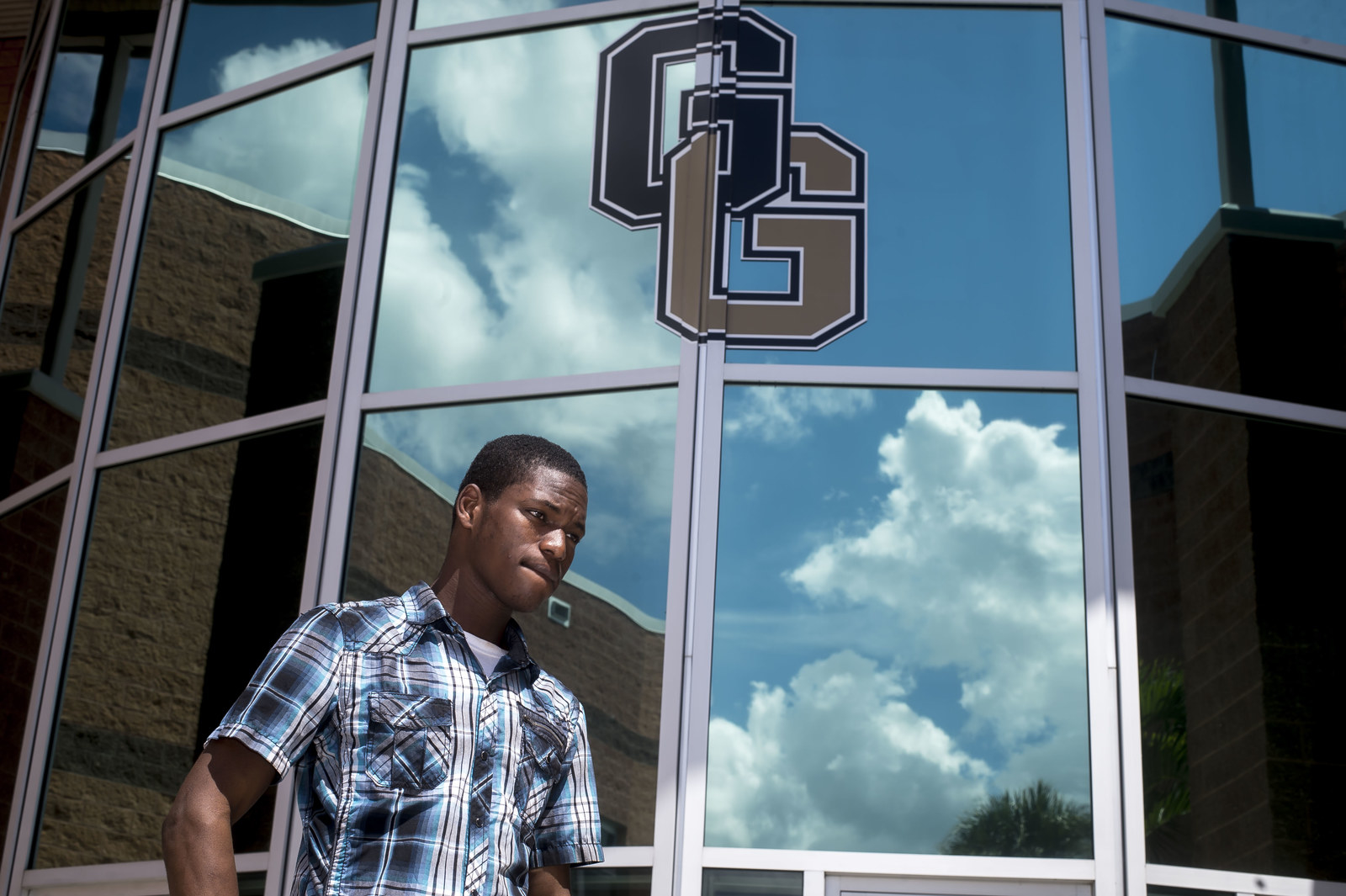
The Collier County Public Schools district is vast and diverse, encompassing nine high schools and two distinct hubs. Along the Gulf Coast lies lush, upscale Naples, a magnet for winter tourists; to the east and inland is Immokalee, a low-income community of trailer parks largely populated by migrant workers and immigrants.
The schools reflect that residential segregation. As of last school year, Barron Collier High School, which sits in Naples sandwiched between a golf club and district headquarters, was 60.5% white, 27.2% Hispanic, and 5.8% black. In contrast, Immokalee High School was 1.8% white, 77.5% Hispanic, and 18.8% black. Golden Gate, where Nehemy wanted to enroll, falls somewhere in the middle. Over half of the county’s public school students speak a language other than English at home: For nearly 42%, that’s Spanish, and just over 7% speak Haitian Creole, like Nehemy.
Nehemy doesn’t earn credits toward a high school diploma at the GED program. Instead, he says he gets a bare-bones education aimed at helping him pass the four subjects tested on the GED exam: language arts, math, science, and social studies. (The district argues in court documents that its adult ESL program serves students well by introducing them to “multiple academic topics including math, science, language arts, social studies, and civics.”) When Nehemy eventually takes the test, he’ll pay $128 for it, out of pocket. He works mostly alone and on computers, without access to the academic and extracurricular features that usually accompany the high school experience. Free lunch, which Nehemy qualifies for, isn’t provided. French, his favorite subject, isn’t included.
Early one afternoon last February, Nehemy stepped out of the sunshine and into the front half of Lorenzo Walker, a hulking gray building that’s run by the district and houses his GED program. He returned to the classroom late from lunch, but if either of his two instructors noticed, they didn’t say anything. One of them, a retired plumber with a background in law enforcement, sat at a desk by the whiteboard, immersed in his computer. A GED program leader bustled in and out of the room with the energy of a football coach, keys clanging from a carabiner clipped to his waist. Every so often, he stopped to hover over one of seven students seated at desks in the front half of the room. Twenty more sat at the back, talking to one another or looking at their phones. Nehemy dropped into a seat among them.
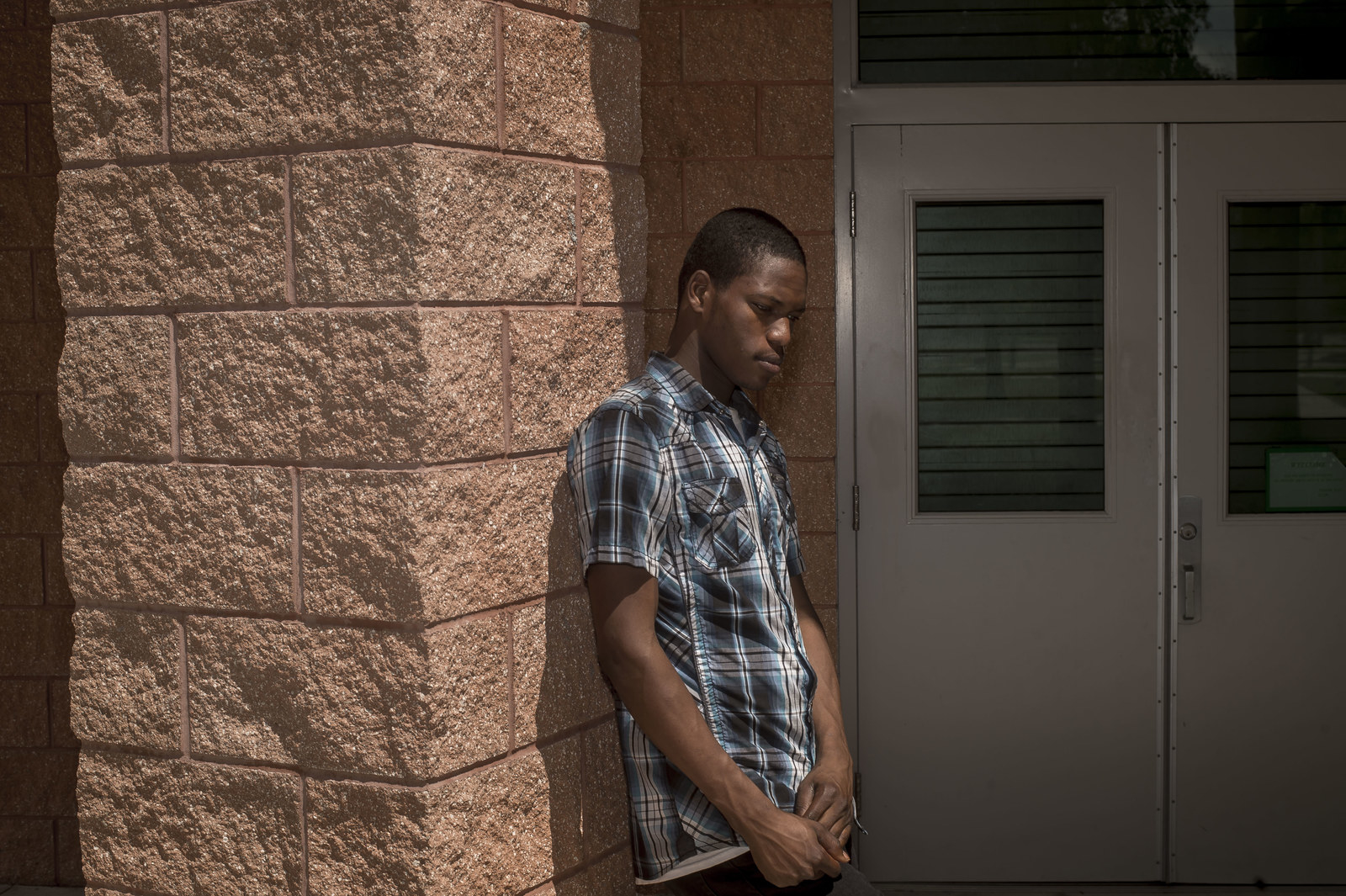
Most of the students appeared to be in their late teens. Although they were asked to sign in — the program ran from 8:20 a.m. until 2:30 p.m. every day — on that February afternoon, they weren’t held accountable for whether they arrived late, left early, or showed up at all. Nehemy didn’t recognize many of his peers, and his studying was regularly interrupted by the steady stream of students entering and exiting the room.
Nehemy doesn’t have assigned homework, regular parent-teacher conferences, or college counselors. The disparities add up: On average, high school graduates have higher rates of employment and higher earnings than their GED-holding counterparts, and they’re far more likely to continue on to postsecondary education. “People that get GEDs are really not afforded the same opportunities as people with high school diplomas,” says Julie Sugarman. “They need to understand there is a real difference between them in terms of career possibilities and going to college.”
In Collier, not all immigrant students even make it into the GED program. They first have to pass five levels of adult English as a second language classes, which discourages many of them. “If you’re 17, and it takes you three years to learn English, are you going to hang in there for another three years for your GED?” says Michael Scanlan. “Chances are, you won’t.” Unlike Nehemy, the other plaintiff in the case hasn’t passed those yet. She’s been working at it for 15 months, according to court documents.
Nehemy’s lawyers argue that the English he was taught at Lorenzo Walker falls short of district, state, and federal standards. They say students are entitled to comprehensive, academic English, and that in the adult program, they mostly learn conversational English. The district counters that they’ve created an extensive new English program, known as ELCATE, which provides older immigrant students with language instruction aimed at helping them transition into the workforce or higher education. Students with GEDs, rather than high school diplomas, can still continue on to Florida’s top public colleges, they add.
Five minutes after settling into his seat, Nehemy flipped open a worn textbook that the program had provided, Common Core Basics in Social Studies, and began doing review exercises on World War II, the Cold War, and the 1950s. To his left, a small cluster of students shared answers. Another nearby group enjoyed a movie about zombies on a desktop computer. One teenager chewed gum and stared listlessly at his phone.
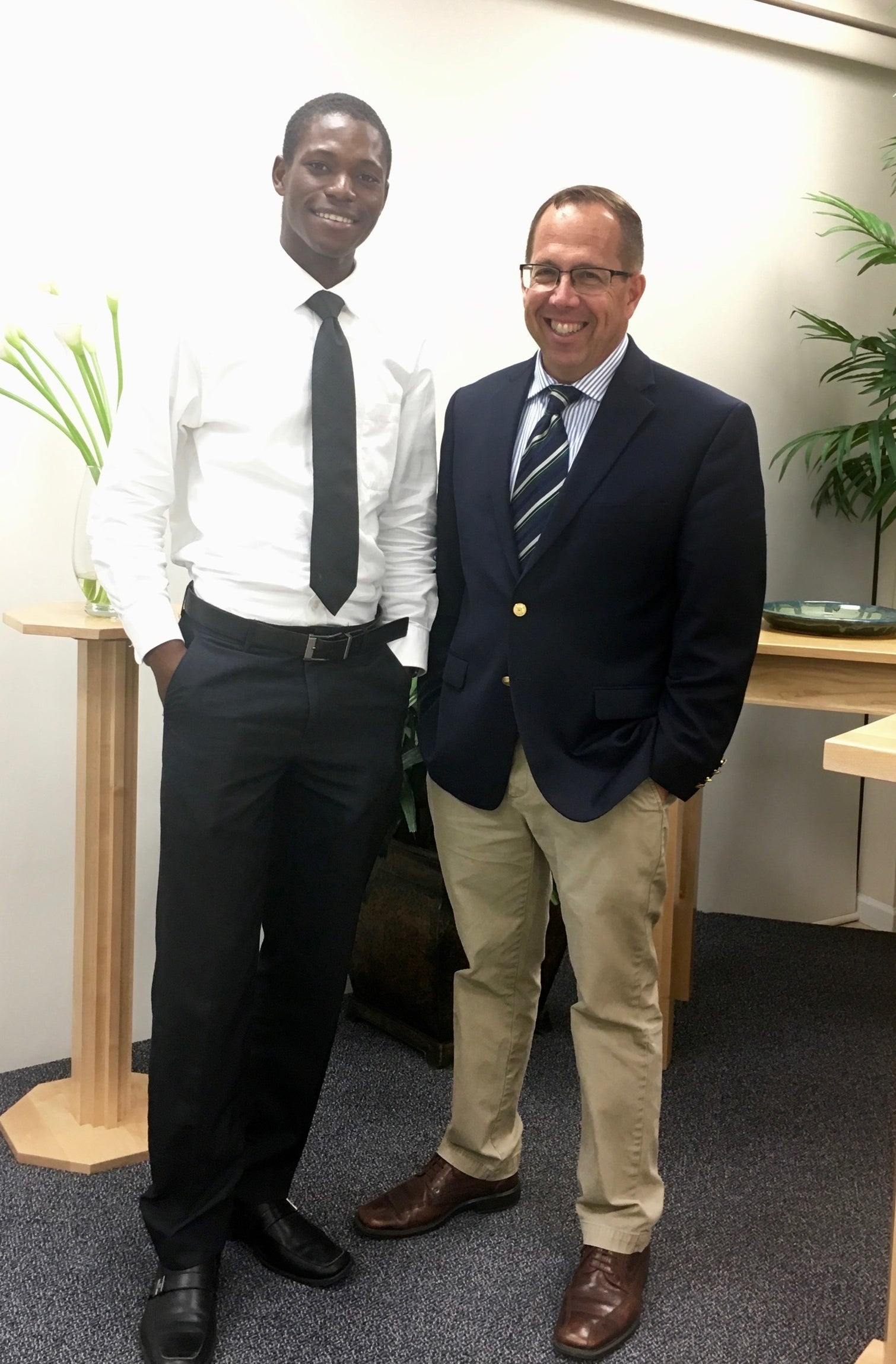
Once the class wrapped, students found their way home alone — free buses are provided for the district’s high school students but not for its adult learners. At Golden Gate, Nehemy could have joined the marching band. He could have joined the soccer team or participated in extracurricular engineering activities, where students build robots and learn about computer science. Nehemy says he would have liked to do those activities with his friends.
What the GED program lacks in fellowship he finds in church, a local branch of Eglise de Jesus-Christ Full Gospel, the denomination that he’d been attending in Haiti three times a week since before he can remember. “I was born in the church,” he says.
Visiting Golden Gate dampens Nehemy’s otherwise positive outlook, so he doesn’t do it much, except when he’s required to as his brothers’ older sibling: Twice, he’s gone to the school for parent-teacher conferences as his dad’s translator. Nehemy is used to filling in for adults — to coaching, rather than being coached. He’s taught himself how to drive the family car — his “little baby” — how to speak with an American accent, and how to play instruments. These days, he teaches the younger Haitian American students in his life how to make music.
On a recent Sunday evening, Nehemy sat on a folding chair in a friend’s living room, in turn shushing, encouraging, and conducting a brass quartet of teenagers. A dozen young Haitian Americans filled the space, ranging in age from 7 to 20, scattered in groups across the linoleum floor. They had brought their instruments to practice music after spending most of the day at church. Many of these students attend Collier’s public schools. A few of the older ones are applying to college. Nehemy hopes he can attend Florida State University someday — when, he doesn’t know.
Legal proceedings like the Southern Poverty Law Center suit can drag on for years. Nehemy’s case is scheduled to go to trial in 2019. But a preliminary injunction that Nehemy’s lawyers filed, which would have allowed him and his peers to enroll in school in the meantime, was recently denied by a judge who maintained that the students could still apply to college with a GED rather than a diploma.
That was little consolation to Nehemy, who says that as months turn into years he’s losing precious time. “With each day that passes, the difference between the high school students and me gets larger,” he says. “High school is what I’m waiting for.” ●
Zoë Kirsch is a fellow at the Teacher Project, an education reporting fellowship at Columbia Journalism School. This story, copublished at the Naples Daily News, is part of the Teacher Project’s coverage of education and immigration.

